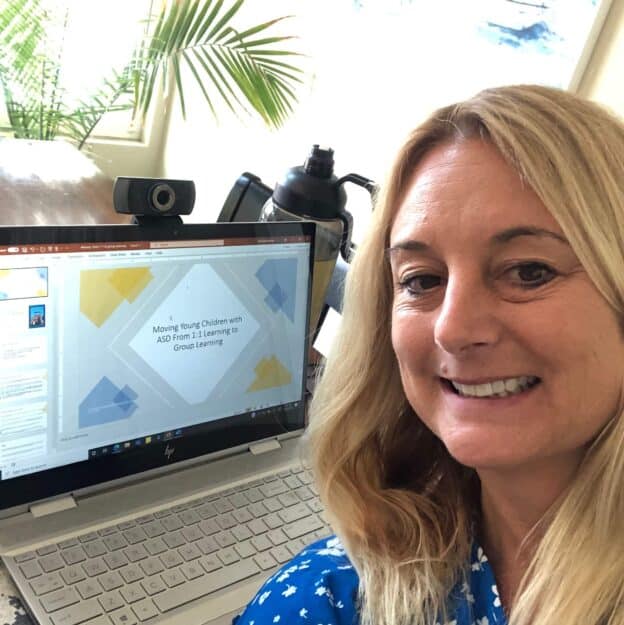In the field of ABA, services are often delivered in a 1:1 format. While necessary and effective in the beginning, individual instruction is less efficient and may make it difficult for the autistic child to transition into school-based services. School-based services are delivered in a group format and based heavily on observational learning. Group instruction early on in programming may provide increased access to reinforcement and quicker rates of skill acquisition while fostering peer interactions and promoting skills in social interaction and communication areas. While there has been an increase in clinic-based ABA services, there is little training and information on how to teach and move a child from 1:1 learning into a group learning experience. This talk will provide clinical decision-making guides, specific programming goals, and strategies for moving children into a group learning format.
Learning Objectives:
- Participants will develop a greater understanding of learning development
- Participants will develop a greater understanding of the role imitation, social referencing and joint attention play in the transition to group learning
- Participants will develop an understanding of the benefits and the research proving group-based ABA
- Participants will develop an understanding to determine group learning readiness and how to begin the steps toward group learning
- Participants will be provided training information on the roles of therapists in the group session to maximize learning
PRESENTER(S): Kelly Bermingham
Kelly has been a Board-Certified Behavior Analyst for 21 years. She is a certified ESDM therapist. She specializes in supporting children to learn how learn as a primary focus of ABA and has authored the book, “The Group Experience, how to support children on the autism spectrum moving from individualized learning to a group learning experience.

